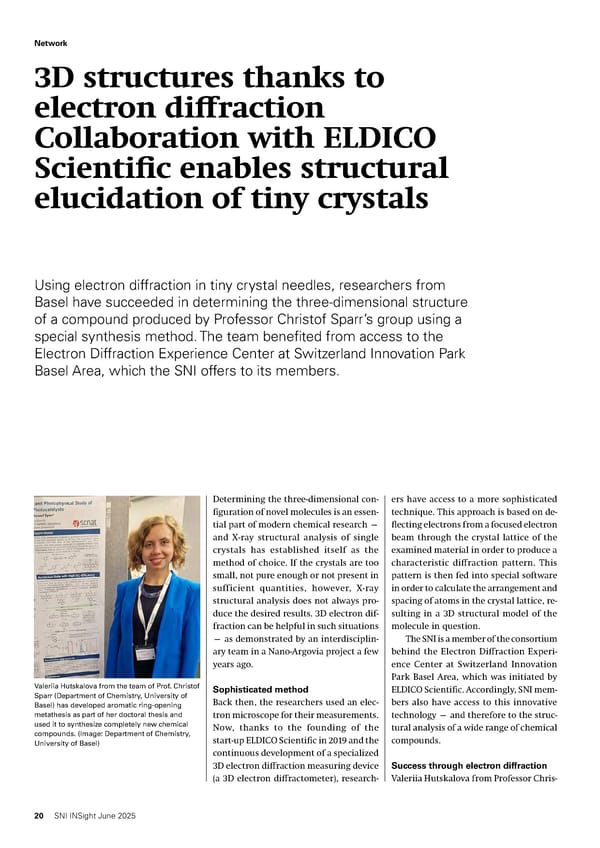Network 3D structures thanks to electron diffraction Collaboration with ELDICO Scientific enables structural elucidation of tiny crystals Using electron diffraction in tiny crystal needles, researchers from Basel have succeeded in determining the three-dimensional structure of a compound produced by Professor Christof Sparr’s group using a special synthesis method. The team benefited from access to the Electron Diffraction Experience Center at Switzerland Innovation Park Basel Area, which the SNI offers to its members. Determining the three-dimensional con- figuration of novel molecules is an essen- tial part of modern chemical research — and X-ray structural analysis of single crystals has established itself as the method of choice. If the crystals are too small, not pure enough or not present in sufficient quantities, however, X-ray structural analysis does not always pro- duce the desired results. 3D electron dif- fraction can be helpful in such situations — as demonstrated by an interdisciplin- ary team in a Nano-Argovia project a few years ago. Sophisticated method Back then, the researchers used an elec- tron microscope for their measurements. Now, thanks to the founding of the start-up ELDICO Scientific in 2019 and the continuous development of a specialized 3D electron diffraction measuring device (a 3D electron diffractometer), research- ers have access to a more sophisticated technique. This approach is based on de- flecting electrons from a focused electron beam through the crystal lattice of the examined material in order to produce a characteristic diffraction pattern. This pattern is then fed into special software in order to calculate the arrangement and spacing of atoms in the crystal lattice, re- sulting in a 3D structural model of the molecule in question. The SNI is a member of the consortium behind the Electron Diffraction Experi- ence Center at Switzerland Innovation Park Basel Area, which was initiated by ELDICO Scientific. Accordingly, SNI mem- bers also have access to this innovative technology — and therefore to the struc- tural analysis of a wide range of chemical compounds. Success through electron diffraction Valeriia Hutskalova from Professor Chris- Valeriia Hutskalova from the team of Prof. Christof Sparr (Department of Chemistry, University of Basel) has developed aromatic ring-opening metathesis as part of her doctoral thesis and used it to synthesize completely new chemical compounds. (Image: Department of Chemistry, University of Basel) 20 SNI INSight June 2025
 SNI Insight - 2025 June Page 19 Page 21
SNI Insight - 2025 June Page 19 Page 21